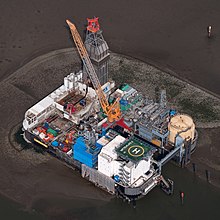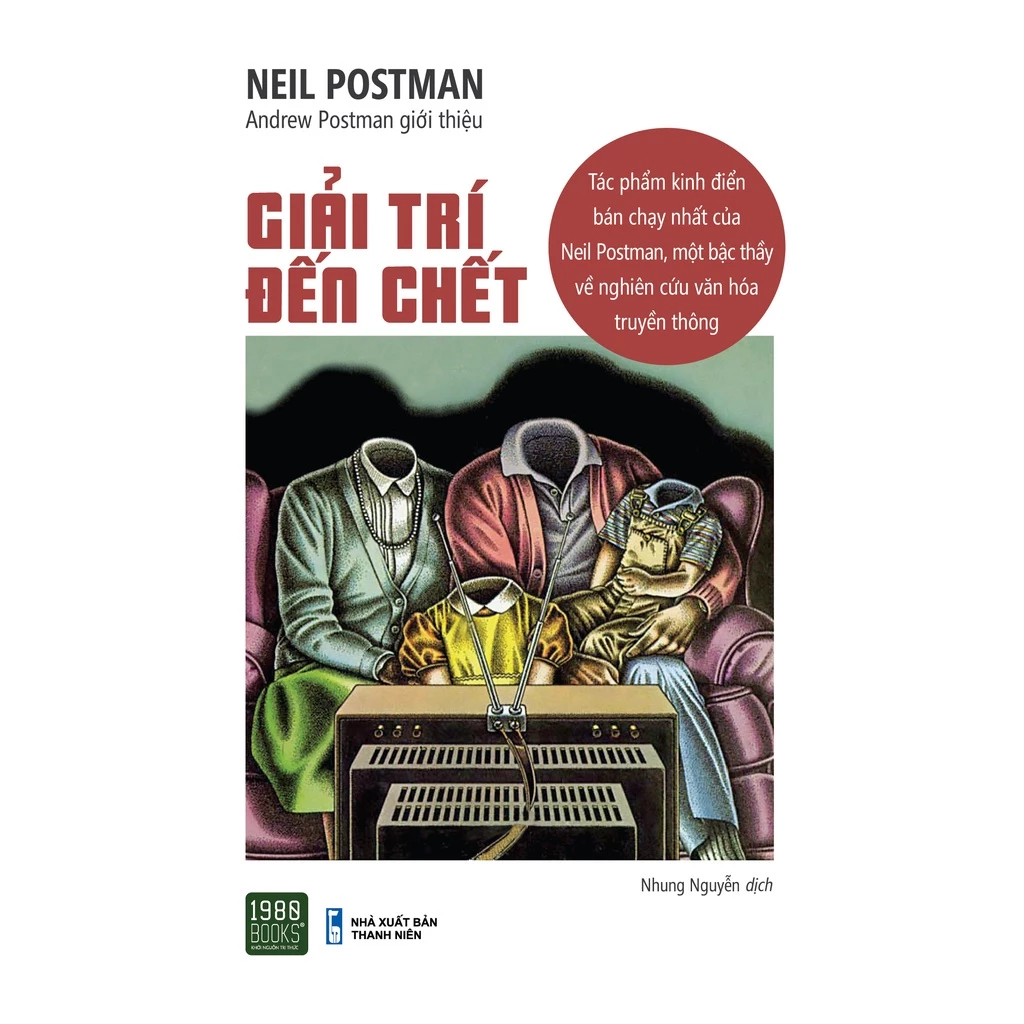Thành viên:Geo-1852350
Vỉa chứa Dầu Khí
[sửa | sửa mã nguồn]
Vỉa chứa dầu mỏ (Petroleum reservior) hay vỉa chứa dầu khí là một bể chứa tự nhiên nằm dưới bề mặt lớp vỏ trái đất chứa các hợp chất hữu cơ hydrocarbons bên trong những lớp đá trầm tích (rock formations) có độ rỗng (porosity) hoặc có các khe nức (fracture). Vỉa chứa dầu mỏ được phân loại chung thành vỉa truyền thống (conventional) và vỉa phi truyền thống (unconventional) reservoirs. Đối với vỉa truyền thống, các hợp chất hữu cơ hydrocarbon diễn ra tự nhiên, như dầu thô (crude oil) hay khí tự nhiên (natural gas) bị bẩy bởi những lớp đá đè lên trên có tính thấm (permeability) thấp hơn, trong khi đó vỉa phi truyền thống, những lớp đá có độ rỗng cao và tính thấm thấp, giữ cho các hợp chất hữu cơ bẫy bên trong, cho nên không cần đá chắn (cap rock). Các vỉa dầu mỏ được tìm thấy bằng phương pháp thăm dò dầu khí hay thăm dò hydrocarbon (hydrocarbon exploration).
Mỏ Dầu (Oil Field)
[sửa | sửa mã nguồn]Phần này có nhiều vấn đề. Xin vui lòng giúp cải thiện hoặc thảo luận về những vấn đề này bên trang thảo luận. (Tìm hiểu cách thức và thời điểm xóa những thông báo này)
|



Mỏ dầu (Oil field) là một khu vực khai thác với sự tập trung các bể chứa tự nhiên có khả năng tích trữ dầu khí nằm dưới bề mặt của lớp vỏ trái đất, trong đó dầu mỏ bị bẩy bên trong những lớp đá có độ rỗng được bịt kín và có khả chống thấm nước. Nói cách khác, diện tích trên bề mặt nằm phía trên bẩy chứa dầu khí cũng được gọi là mỏ dầu.[1][2]
Bởi vì các vỉa chứa dầu (oil reservoirs) điển hình có khả năng bao phủ một khu vực rộng lớn kéo dài đến hàng trăm ki-lô-mét, để có thể khai thác toàn bộ cần đòi hỏi rất nhiều giếng dầu (oil well) nằm rải rác trên một số khu vực nhất định. Ngoài ra, còn có những giếng dầu đang trong hoạt động thăm dò tìm kiếm xung quanh vỉa, các đường ống vận chuyển dầu khí, và các thiết bị chức năng hỗ trợ.
Bên cạnh đó, các mỏ dầu khí nằm cách xa khu vực dân cư sinh sống, vì thế hình thành khai thác mỏ thường là những nhiệm vụ cực kì phức tạp trong việc tổ chức cung ứng vận chuyển. Điều này có thể vượt qua yêu cầu khai thác đơn thuần, để bao gồm các cơ sở hạ tầng liên kết. Ví dụ, các công nhân, kỹ sư dầu khí yêu cầu đòi hỏi nơi ăn ở để cho phép họ có thể làm việc trên các giàn khoan hay các nơi chứa mỏ dầu khí. Nói cách khác, phòng ở và trang thiết bị cần phải có điện nước. Ở những nói có khí hậu khắc nghiệt, những đường ống vận chuyển dầu khí cần phải được sưởi ấm. Cho nên, khí đốt dư thừa có thể bị rò rỉ (burned off) ra bên ngoài nếu không có cách nào tận dụng nó - đòi hỏi phải có lò sưởi, ống khói, và đường ống để vận chuyển đến lò sưởi.
Do đó, các mỏ dầu khí điển hình giống như các thị trấn nhỏ nằm riêng biệt
Thus, the typical oil field resembles a small, self-contained town in the midst of a landscape dotted with drilling rigs or the pump jacks, which are known as "nodding donkeys" because of their bobbing arm. Several companies, such as Hill International, Bechtel, Esso, Weatherford International, Schlumberger Limited, Baker Hughes and Halliburton, have organizations that specialize in the large-scale construction of the infrastructure and providing specialized services required to operate a field profitably.
More than 40,000 oil fields are scattered around the globe, on land and offshore. The largest are the Ghawar Field in Saudi Arabia and the Burgan Field in Kuwait, with more than 60 billion barrels (9.5×109 m3) estimated in each. Most oil fields are much smaller. According to the US Department of Energy (Energy Information Administration), as of 2003 the US alone had over 30,000 oil fields.
In the modern age, the location of oil fields with proven oil reserves is a key underlying factor in many geopolitical conflicts.[3]
The term "oilfield" is also used as a shorthand to refer to the entire petroleum industry. However, it is more accurate to divide the oil industry into three sectors: upstream (crude production from wells and separation of water from oil), midstream (pipeline and tanker transport of crude) and downstream (refining, marketing of refined products and transportation to Oil stations).
Mỏ Khí Đốt
[sửa | sửa mã nguồn]


Natural gas originates by the same geological thermal cracking process that converts kerogen to petroleum. As a consequence, oil and natural gas are often found together. In common usage, deposits rich in oil are known as oil fields, and deposits rich in natural gas are called natural gas fields.
In general, organic sediments buried in depths of 1,000 m to 6,000 m (at temperatures of 60 °C to 150 °C) generate oil, while sediments buried deeper and at higher temperatures generate natural gas. The deeper the source, the "drier" the gas (that is, the smaller the proportion of condensates in the gas). Because both oil and natural gas are lighter than water, they tend to rise from their sources until they either seep to the surface or are trapped by a non-permeable stratigraphic trap. They can be extracted from the trap by drilling.
The largest natural gas field is South Pars/Asalouyeh gas field, which is shared between Iran and Qatar. The second largest natural gas field is the Urengoy gas field, and the third largest is the Yamburg gas field, both in Russia.
Like oil, natural gas is often found underwater in offshore gas fields such as the North Sea, Corrib Gas Field off Ireland, and near Sable Island. The technology to extract and transport offshore natural gas is different from land-based fields. It uses a few, very large offshore drilling rigs, due to the cost and logistical difficulties in working over water.
Rising gas prices in the early 21st century encouraged drillers to revisit fields that previously were not considered economically viable. For example, in 2008 McMoran Exploration passed a drilling depth of over 32,000 feet (9754 m) (the deepest test well in the history of gas production) at the Blackbeard site in the Gulf of Mexico.[4] Exxon Mobil's drill rig there had reached 30,000 feet by 2006 without finding gas, before it abandoned the site.
Formation
[sửa | sửa mã nguồn]Crude oil is found in all oil reservoirs formed in the Earth's crust from the remains of once-living things. Evidence indicates that millions of years of heat and pressure changed the remains of microscopic plant and animal into oil and natural gas.
Roy Nurmi, an interpretation adviser for Schlumberger oil field services company, described the process as follows:
Plankton and algae, proteins and the life that's floating in the sea, as it dies, falls to the bottom, and these organisms are going to be the source of our oil and gas. When they're buried with the accumulating sediment and reach an adequate temperature, something above 50 to 70 °C they start to cook. This transformation, this change, changes them into the liquid hydrocarbons that move and migrate, will become our oil and gas reservoir.[5]
In addition to the aquatic environment, which is usually a sea but might also be a river, lake, coral reef, or algal mat, the formation of an oil or gas reservoir also requires a sedimentary basin that passes through four steps:[6]
- Deep burial under sand and mud.
- Pressure cooking.
- Hydrocarbon migration from the source to the reservoir rock
- Trapping by impermeable rock.
Timing is also an important consideration; it is suggested that the Ohio River Valley could have had as much oil as the Middle East at one time, but that it escaped due to a lack of traps.[6] The North Sea, on the other hand, endured millions of years of sea level changes that successfully resulted in the formation of more than 150 oilfields.[7]
Although the process is generally the same, various environmental factors lead to the creation of a wide variety of reservoirs. Reservoirs exist anywhere from the land surface to 30.000 ft (9.000 m) below the surface and are a variety of shapes, sizes, and ages.[8] In recent years, igneous reservoirs have become an important new field of oil exploration, especially in trachyte and basalt formations. These two types of reservoirs differ in oil content and physical properties like fracture connectivity, pore connectivity, and rock porosity.[9]
Traps
[sửa | sửa mã nguồn]A trap forms when the buoyancy forces driving the upward migration of hydrocarbons through a permeable rock cannot overcome the capillary forces of a sealing medium. The timing of trap formation relative to that of petroleum generation and migration is crucial to ensuring a reservoir can form.[10]
Petroleum geologists broadly classify traps into three categories that are based on their geological characteristics: the structural trap, the stratigraphic trap and the far less common hydrodynamic trap.[11] The trapping mechanisms for many petroleum reservoirs have characteristics from several categories and can be known as a combination trap. Traps are described as structural traps (in deformed strata such as folds and faults) or stratigraphic traps (in areas where rock types change, such as unconformities, pinch-outs and reefs). A trap is an essential component of a petroleum system.
Structural traps
[sửa | sửa mã nguồn]Structural traps are formed as a result of changes in the structure of the subsurface due to processes such as folding and faulting, leading to the formation of domes, anticlines, and folds.[12] Examples of this kind of trap are an anticline trap,[13] a fault trap and a salt dome trap. (see salt dome)
They are more easily delineated and more prospective than their stratigraphic counterparts, with the majority of the world's petroleum reserves being found in structural traps.
- Structural traps; blue: source rock, yellow: reservoir rock, green: seal rock, red: hydrocarbons
-
Structural trap within an Anticline
-
Structural trap along a fault plane
-
Structural-stratigraphic trap in a tilted block draped by mudstones
Stratigraphic traps
[sửa | sửa mã nguồn]Stratigraphic traps are formed as a result of lateral and vertical variations in the thickness, texture, porosity, or lithology of the reservoir rock. Examples of this type of trap are an unconformity trap, a lens trap and a reef trap.[14]
- Stratigraphic traps; blue: source rock, yellow: reservoir rock, green: seal rock, red: hydrocarbons
-
Stratigraphic trap under an unconformity
-
Stratigraphic trap in a fossilised coral reef (yellow) sealed by mudstones (green)
-
Stratigraphic trap around an evaporite (pink) salt dome
Hydrodynamic traps
[sửa | sửa mã nguồn]Hydrodynamic traps are a far less common type of trap.[15] They are caused by the differences in water pressure, that are associated with water flow, creating a tilt of the hydrocarbon-water contact.
Seal/ cap rock
[sửa | sửa mã nguồn]The seal is a fundamental part of the trap that prevents hydrocarbons from further upward migration.
A capillary seal is formed when the capillary pressure across the pore throats is greater than or equal to the buoyancy pressure of the migrating hydrocarbons. They do not allow fluids to migrate across them until their integrity is disrupted, causing them to leak. There are two types of capillary seal [16] whose classifications are based on the preferential mechanism of leaking: the hydraulic seal and the membrane seal.
The membrane seal will leak whenever the pressure differential across the seal exceeds the threshold displacement pressure, allowing fluids to migrate through the pore spaces in the seal. It will leak just enough to bring the pressure differential below that of the displacement pressure and will reseal.[17]
The hydraulic seal occurs in rocks that have a significantly higher displacement pressure such that the pressure required for tension fracturing is actually lower than the pressure required for fluid displacement – for example, in evaporites or very tight shales. The rock will fracture when the pore pressure is greater than both its minimum stress and its tensile strength then reseal when the pressure reduces and the fractures close.
Estimating reserves
[sửa | sửa mã nguồn]After the discovery of a reservoir, a petroleum engineer will seek to build a better picture of the accumulation. In a simple textbook example of a uniform reservoir, the first stage is to conduct a seismic survey to determine the possible size of the trap. Appraisal wells can be used to determine the location of oil–water contact and with it the height of the oil bearing sands. Often coupled with seismic data, it is possible to estimate the volume of an oil-bearing reservoir.
The next step is to use information from appraisal wells to estimate the porosity of the rock. The porosity, or the percentage of the total volume that contains fluids rather than solid rock, is 20–35% or less. It can give information on the actual capacity. Laboratory testing can determine the characteristics of the reservoir fluids, particularly the expansion factor of the oil, or how much the oil expands when brought from the high pressure and high temperature of the reservoir to a "stock tank" at the surface.
With such information, it is possible to estimate how many "stock tank" barrels of oil are located in the reservoir. Such oil is called the stock tank oil initially in place (STOIIP). As a result of studying factors such as the permeability of the rock (how easily fluids can flow through the rock) and possible drive mechanisms, it is possible to estimate the recovery factor, or what proportion of oil in place can be reasonably expected to be produced. The recovery factor is commonly 30–35%, giving a value for the recoverable resources.
The difficulty is that reservoirs are not uniform. They have variable porosities and permeabilities and may be compartmentalised, with fractures and faults breaking them up and complicating fluid flow. For this reason, computer modeling of economically viable reservoirs is often carried out. Geologists, geophysicists, and reservoir engineers work together to build a model that allows simulation of the flow of fluids in the reservoir, leading to an improved estimate of the recoverable resources.
Reserves are only the part of those recoverable resources that will be developed through identified and approved development projects. Because the evaluation of "Reserves" has a direct impact on the company or the asset value, it usually follows a strict set of rules or guidelines (even though loopholes are commonly used by companies to inflate their own share price). The most common guidelines are the SPE PRMS guidelines, the SEC Rules, or the COGE Handbook. Government may also have their own systems, making it more complicated for investors to compare one company with another.
Production
[sửa | sửa mã nguồn]To obtain the contents of the oil reservoir, it is usually necessary to drill into the Earth's crust, although surface oil seeps exist in some parts of the world, such as the La Brea tar pits in California and numerous seeps in Trinidad.
Drive mechanisms
[sửa | sửa mã nguồn]A virgin reservoir may be under sufficient pressure to push hydrocarbons to the surface. As the fluids are produced, the pressure will often decline, and production will falter. The reservoir may respond to the withdrawal of fluid in a way that tends to maintain the pressure. Artificial drive methods may be necessary.
Solution-gas drive
[sửa | sửa mã nguồn]This mechanism (also known as depletion drive) depends on the associated gas of the oil. The virgin reservoir may be entirely semi-liquid but will be expected to have gaseous hydrocarbons in solution due to the pressure. As the reservoir depletes, the pressure falls below the bubble point and the gas comes out of solution to form a gas cap at the top. This gas cap pushes down on the liquid helping to maintain pressure.
This occurs when the natural gas is in a cap below the oil. When the well is drilled the lowered pressure above means that the oil expands. As the pressure is reduced it reaches bubble point and subsequently the gas bubbles drive the oil to the surface. The bubbles then reach critical saturation and flow together as a single gas phase. Beyond this point and below this pressure the gas phase flows out more rapidly than the oil because of its lowered viscosity. More free gas is produced and eventually the energy source is depleted. In some cases depending on the geology the gas may migrate to the top of the oil and form a secondary gas cap.
Some energy may be supplied by water, gas in water, or compressed rock. These are usually minor contributions with respect to hydrocarbon expansion.
By properly managing the production rates, greater benefits can be had from solution-gas drives. Secondary recovery involves the injection of gas or water to maintain reservoir pressure. The gas/oil ratio and the oil production rate are stable until the reservoir pressure drops below the bubble point when critical gas saturation is reached. When the gas is exhausted, the gas/oil ratio and the oil rate drops, the reservoir pressure has been reduced, and the reservoir energy exhausted.
Gas cap drive
[sửa | sửa mã nguồn]In reservoirs already having a gas cap (the virgin pressure is already below bubble point), the gas cap expands with the depletion of the reservoir, pushing down on the liquid sections applying extra pressure.
This is present in the reservoir if there is more gas than can be dissolved in the reservoir. The gas will often migrate to the crest of the structure. It is compressed on top of the oil reserve, as the oil is produced the cap helps to push the oil out. Over time the gas cap moves down and infiltrates the oil and eventually the well will begin to produce more and more gas until it produces only gas. It is best to manage the gas cap effectively, that is, placing the oil wells such that the gas cap will not reach them until the maximum amount of oil is produced. Also a high production rate may cause the gas to migrate downward into the production interval. In this case, over time, the reservoir pressure depletion is not as steep as in the case of solution-based gas drive. In this case, the oil rate will not decline as steeply but will depend also on the placement of the well with respect to the gas cap.
As with other drive mechanisms, water or gas injection can be used to maintain reservoir pressure. When a gas cap is coupled with water influx the recovery mechanism can be highly efficient.
Aquifer (water) drive
[sửa | sửa mã nguồn]Water (usually salty) may be present below the hydrocarbons. Water, as with all liquids, is compressible to a small degree. As the hydrocarbons are depleted, the reduction in pressure in the reservoir allows the water to expand slightly. Although this unit expansion is minute, if the aquifer is large enough this will translate into a large increase in volume, which will push up on the hydrocarbons, maintaining pressure.
With a water-drive reservoir, the decline in reservoir pressure is very slight; in some cases, the reservoir pressure may remain unchanged. The gas/oil ratio also remains stable. The oil rate will remain fairly stable until the water reaches the well. In time, the water cut will increase and the well will be watered out.[18]
The water may be present in an aquifer (but rarely one replenished with surface water). This water gradually replaces the volume of oil and gas that is produced out of the well, given that the production rate is equivalent to the aquifer activity. That is, the aquifer is being replenished from some natural water influx. If the water begins to be produced along with the oil, the recovery rate may become uneconomical owing to the higher lifting and water disposal costs.
Water and gas injection
[sửa | sửa mã nguồn]If the natural drives are insufficient, as they very often are, then the pressure can be artificially maintained by injecting water into the aquifer or gas into the gas cap.
Gravity drainage
[sửa | sửa mã nguồn]The force of gravity will cause the oil to move downward of the gas and upward of the water. If vertical permeability exists then recovery rates may be even better.
Gas and gas condensate reservoirs
[sửa | sửa mã nguồn]These occur if the reservoir conditions allow the hydrocarbons to exist as a gas. Retrieval is a matter of gas expansion. Recovery from a closed reservoir (i.e., no water drive) is very good, especially if bottom hole pressure is reduced to a minimum (usually done with compressors at the wellhead). Any produced liquids are light coloured to colourless, with a gravity higher than 45 API. Gas cycling is the process where dry gas is injected and produced along with condensed liquid.
See also
[sửa | sửa mã nguồn]- Caprock
- Drilling
- Drilling fluid
- Drilling rig
- Drillship
- List of acronyms in oil and gas exploration and production
- List of natural gas fields
- List of oil fields
- List of oilfield service companies
- North Sea Oil
- Oilfield terminology
- Oil platform
- Oil well
- OAPEC
- OPEC
- Petroleum play
- Stranded gas reserve
- Subsea
- Underground hydrogen storage
- Well stimulation
References
[sửa | sửa mã nguồn]- ^ API Executive Committee on Standardization of Oilfield Equipment and Materials (1 tháng 1 năm 1988). “Glossary of Oilfield Production Terminology” (PDF). Dallas: American Petroleum Institute. Truy cập ngày 10 tháng 2 năm 2020.
- ^ Gillis, Gretchen. “oil field - Schlumberger Oilfield Glossary”. www.glossary.oilfield.slb.com. Truy cập ngày 11 tháng 2 năm 2020.
- ^ Yergin, Daniel (1991). The Prize: The Epic Quest for Oil, Money, and Power. New York: Simon & Schuster. ISBN 0-671-50248-4.
- ^ A Famed Dry Hole Gets a Second Shot, Wall Street Journal, 21 July 2008, p.B1
- ^ “The Making of Oil: Birth of a Reservoir”. Schlumberger Excellence in Educational Development. Bản gốc lưu trữ ngày 20 tháng 11 năm 2005. Truy cập ngày 30 tháng 1 năm 2006.
- ^ a b “What is a Reservoir?”. Schlumberger Excellence in Educational Development. Bản gốc lưu trữ ngày 27 tháng 4 năm 2006. Truy cập ngày 30 tháng 1 năm 2006.
- ^ “Rise and Fall of the North Sea”. Schlumberger Excellence in Educational Development. Bản gốc lưu trữ ngày 22 tháng 11 năm 2005. Truy cập ngày 30 tháng 1 năm 2006.
- ^ “What is a Reservoir? - What are some characteristics?”. Schlumberger Excellence in Educational Development. Bản gốc lưu trữ ngày 16 tháng 8 năm 2011. Truy cập ngày 30 tháng 1 năm 2006.
- ^ Zongli, Liu; Zhuwen, Wang; Dapeng, Zhou; Shuqin, Zhao; Min, Xiang (31 tháng 5 năm 2017). “Pore Distribution Characteristics of the Igneous Reservoirs in the Eastern Sag of the Liaohe Depression”. Open Geosciences. 9 (1): 161–173. doi:10.1515/geo-2017-0014. ISSN 2391-5447.
- ^ Gluyas, J; Swarbrick, R (2004). Petroleum Geoscience. Blackwell Publishing. ISBN 978-0-632-03767-4.
- ^ Basin Analysis: Principles and Applications. Allen, P.A. & Allen, J.R. (2005). Second Edition. Publ. Blackwell Publishing
- ^ “Structural traps”. Bản gốc lưu trữ ngày 14 tháng 2 năm 2015. Truy cập ngày 2 tháng 2 năm 2012.
- ^ Schlumberger - Search Results
- ^ “The Oil Trap”. Bản gốc lưu trữ ngày 23 tháng 1 năm 2013. Truy cập ngày 2 tháng 2 năm 2012.
- ^ Gluyas, J; Swarbrick, R (2004). Petroleum Geoscience. Blackwell Publishing. tr. 148. ISBN 978-0-632-03767-4.
- ^ Watts, N.L., 1987, Theoretical aspects of cap-rock and fault seals for single- and two-phase hydrocarbon columns, Marine and Petroleum Geology, 4, 274-307.
- ^ Peter J. Ortoleva (1994). “Basin compartments and seals”. AAPG Memoir. AAPG. 61: 34. ISBN 9780891813408. Truy cập ngày 15 tháng 3 năm 2012.
- ^ Waterdrive at Schlumberger Oilfield Glossary
 GIẢM
30%
GIẢM
30%
 GIẢM
31%
GIẢM
31%
 GIẢM
2%
GIẢM
2%
 GIẢM
50%
GIẢM
50%
 GIẢM
38%
GIẢM
38%
 GIẢM
26%
GIẢM
26%









